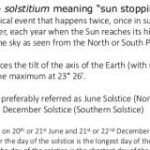India commenced year-round observations in the Arctic: Basics Explained

India commenced year-round observations in Svalbard, the world’s northern most inhabited place, in the Arctic at the research station, Himadri. It would cater to new scientific projects in atmospheric and space sciences; and will bridge knowledge gaps and data deficiency during winter polar nights, especially in atmospheric and biological sciences and space physics.
The polar regions of Earth – the Arctic and Antarctic – are deserts of ice and snow characterized by exceedingly cold temperatures. The Arctic contains the geographic North Pole and consists of the Arctic Ocean, adjacent seas and parts of eight nations: Alaska (United States), Northern Canada, Finland, Greenland (Denmark), Iceland, Norway, Russia and Sweden. The Arctic is partly under the jurisdiction of these eight nations in the Arctic Circle, including six coastal States which, under the United Nations Convention on the Law of the Sea (UNCLOS), have control over natural resources in seabed and the waters out to 200 nautical miles in their respective exclusive economic zones (EEZ).
LEARNING FROM HOME/ WITHOUT CLASSES/ BASICS
The Lok Sabha, on 22 July 2022, passed the Indian Antarctic Bill, first introduced in the lower house on 1 April.
The bill is the country’s first domestic legislation related to it. It will regulate Indian activities in the region to protect the Antarctic environment. Twenty-seven countries, including the United States, Australia, Germany, the United Kingdom, Turkey, Russia, and Ukraine already have domestic legislation on Antarctica.
The provisions of the Bill will apply to any person, vessel or aircraft that is a part of an Indian expedition to Antarctica. The expedition can only be done after a permit is issued by a committee formed under the bill.
The committee will have 10 members, not below the rank of joint secretary and two experts. The committee will be chaired by the secretary of the Ministry of Earth Sciences and the members will be nominated from various ministries and organizations such as defense, external affairs, National Centre for Polar and Ocean Research, and the National Security Council Secretariat.The experts will have to be specialists in the Antarctic environment and geopolitics to be nominated.
The bill does not allow nuclear explosion or disposal of radioactive wastes in the region and the introduction of non-sterile soil. It also prohibits the disposal of garbage, plastic or other substances harmful to the marine environment, into the sea.
On defying the conventions of the bill, the following penalties will be applicable:
Conducting a nuclear explosion in Antarctica will be punished with 20 years in jail, which may extend to life imprisonment, along with a fine of at least Rs 50 crore
Drilling for mineral resources or introducing non-native animals or plants in Antarctica without a permit will be punishable with seven years in jail and a fine between Rs 10 lakh and Rs 50 lakh
One or more sessions courts will be designated to try offenses under the bill. The Union government will also specify the territorial jurisdiction of the courts.Prior to this, all Indian expeditions to Antarctica were regulated by international law.
India has the Observer Status in the Arctic Council. It has built three permanent research base stations in Antarctica —Dakshin Gangotri (1983), Maitri (1988), and Bharati (2012).
The National Centre for Polar and Ocean Research (NCPOR) in Goa — an autonomous institute under the Ministry of Earth Sciences —manages the entire Indian Antarctic programme. The Dakshin Gangotri has since been decommissioned after it got buried under ice and has been marked as an historic site.
Indian Arctic station ‘Himadri’ is located at Ny Alesund, Spitsbergen Island, Norway and serves as a hub of Indian scientific investigations since 2008.
Antarctica “the white continent” is the fifth largest continent in the world with its
unique wildlife, extreme coldness, dryness, windiness, and unexplored territories. The word Antarctica is derived from the Greek word antarktike, which means “opposite to the north” i.e., opposite to the Arctic.
The most important Antarctica treaty was signed in 1959 in Washington, which has 14 articles. At the beginning of this treaty, there were 12 countries and now the members of the treaty have increased to 50.
The treaty prohibits military activities, nuclear explosions, mineral exploration, and waste disposal and supports only scientific research. In 1991, 24 nations decided to ban oil and other mineral exploration until 2048.
The Treaty provides for “freedom of scientific investigation in Antarctica, promotes international cooperation in scientific investigation in Antarctica”, and encourages “the establishment of cooperative working relations with those Specialized Agencies of the United Nations and other international organizations having a scientific or technical interest in Antarctica”.
The Protocol on Environmental Protection to the Antarctic Treaty was signed in Madrid on October 4, 1991 and entered into force in 1998. It designates Antarctica as a “natural
reserve, devoted to peace and science” (Art. 2). Article 3 of the Environment Protocol sets forth basic principles applicable to human activities in Antarctica and Article 7 prohibits all activities relating to Antarctic mineral resources, except for scientific research. Environmental Monitoring is important to observe the human-induced change in the natural Antarctic environment.






0 Comments